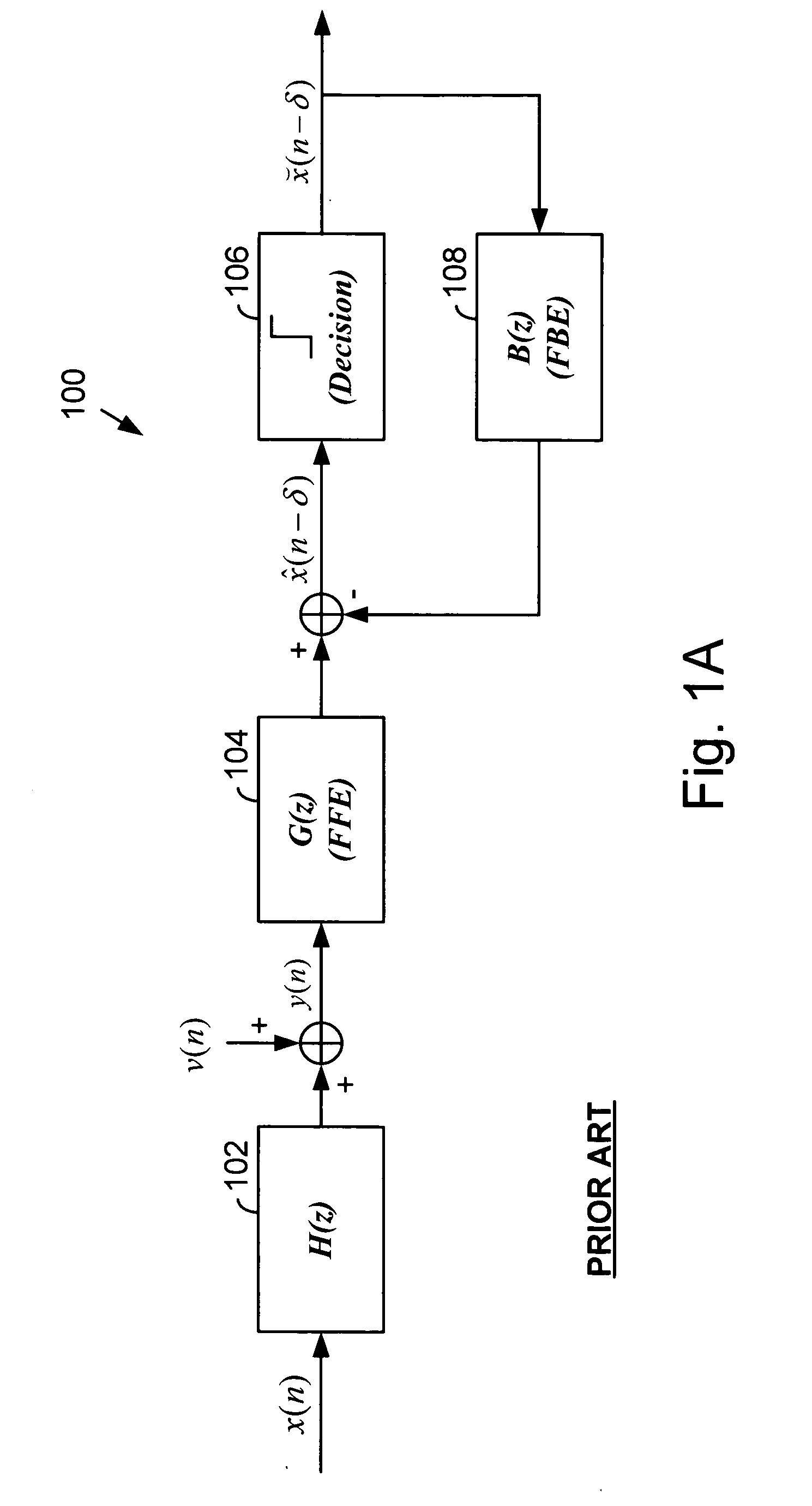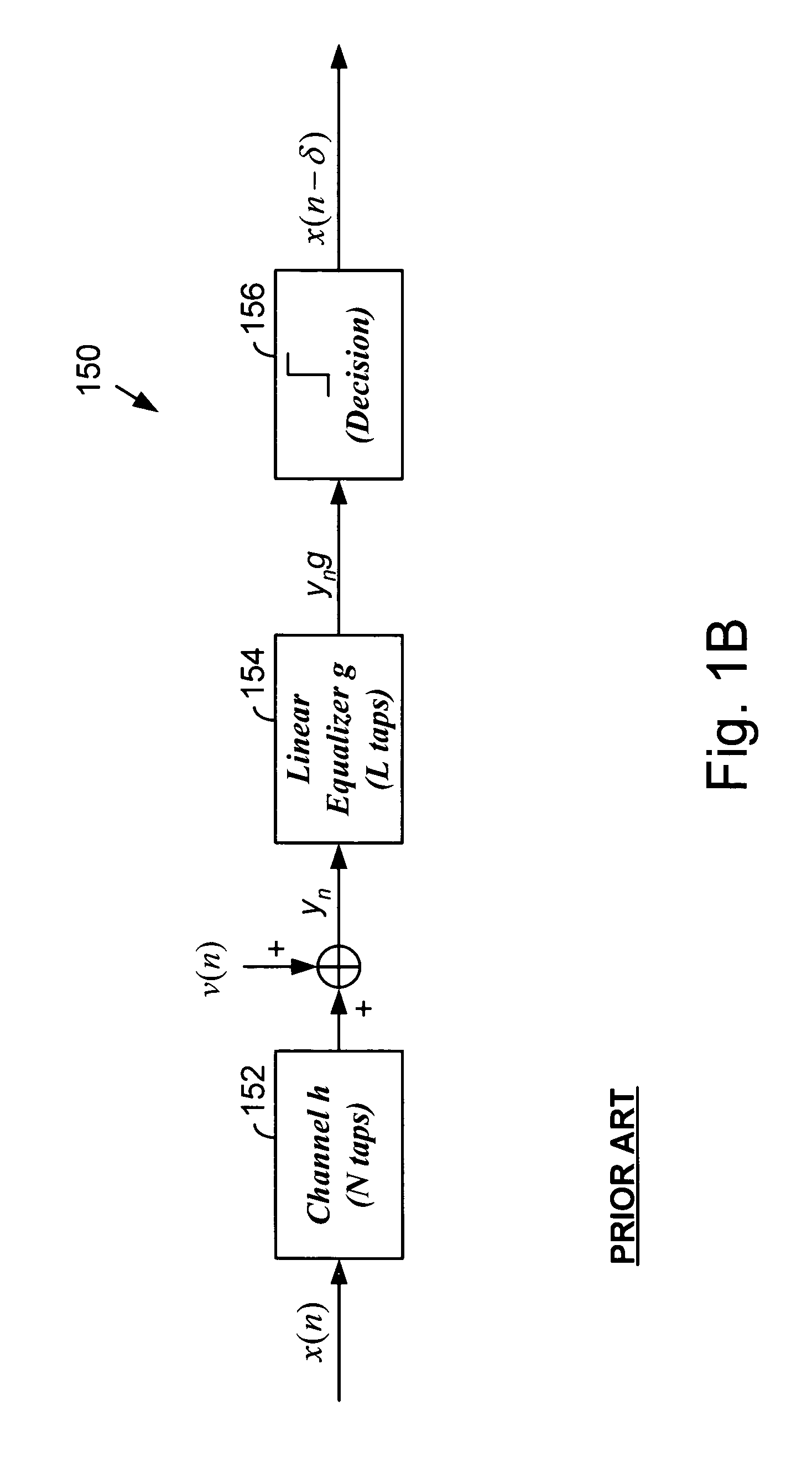Computation of decision feedback equalizer coefficients with constrained feedback tap energy
a decision feedback equalizer and tap energy technology, applied in the field of digital communication, can solve the problems of equalizers suffering from noise enhancement, interfering between subject symbols and a plurality of symbols, and channel also introducing noise into symbols
- Summary
- Abstract
- Description
- Claims
- Application Information
AI Technical Summary
Benefits of technology
Problems solved by technology
Method used
Image
Examples
Embodiment Construction
[0038]FIG. 2 is a logic diagram generally illustrating operation according to the present invention in determining Decision Feedback Equalizer (DFE) coefficients and in applying such coefficients to a DFE. The operations of the present invention are performed by a processor, such as a Digital Signal Processor (DSP), or other circuitry present within a receiver that determines DFE coefficients to be applied to a DFE, also resident in the receiver. The DFE operates upon samples of a received signal in an attempt to remove channel effects from the samples so that digital data may be extracted from the samples. The structure and operation of DFEs, one of which was illustrated in FIG. 1A, are generally known and will not be further described herein except as they relate to the present invention.
[0039] The operations of the present invention will be first performed by a processor, tap computer, DSP, or other receiver device, to determine initial DFE coefficients to be used in subsequent ...
PUM
 Login to View More
Login to View More Abstract
Description
Claims
Application Information
 Login to View More
Login to View More - R&D
- Intellectual Property
- Life Sciences
- Materials
- Tech Scout
- Unparalleled Data Quality
- Higher Quality Content
- 60% Fewer Hallucinations
Browse by: Latest US Patents, China's latest patents, Technical Efficacy Thesaurus, Application Domain, Technology Topic, Popular Technical Reports.
© 2025 PatSnap. All rights reserved.Legal|Privacy policy|Modern Slavery Act Transparency Statement|Sitemap|About US| Contact US: help@patsnap.com



